
For SpaceUpClose.com & RocketSTEM
CAPE CANAVERAL, FL – Hearkening back to a Hollywood like thriller NASA is on the cusp of launching DART – the agency’s first ever Planetary Defense mission purposefully directed towards a near Earth binary asteroid system with a kinetic impactor to determine if its trajectory can be altered and deflected and thereby simulate saving Earth and humanity!
DART is scheduled to launch at 1:21 a.m. EST Wednesday, Nov. 24 (0621 GMT, 10:21 p.m. PST Tuesday, Nov. 23) on a recycled SpaceX Falcon 9 rocket from Vandenberg Space Force Base in California.
NASA’s Double Asteroid Redirection Test (DART) mission will help determine if intentionally crashing a spacecraft into an asteroid is an effective way to change its course – in case there is a future surprise asteroid heading our way creating a crisis and imperiling all life on our Home Planet as portrayed in the sci-fi thriller ‘Armageddon.’
The dinosaurs were wiped out by an asteroid striking Earth millions of years ago.
DART is targeting a binary asteroid system comprising the larger companion asteroid called Didymos (Greek for “twin”) about 0.6 mi diameter (1.0 km diameter) and the small moonlet asteroid Dimorphos (Greek for “two forms”) about 520 feet diameter (160 m).
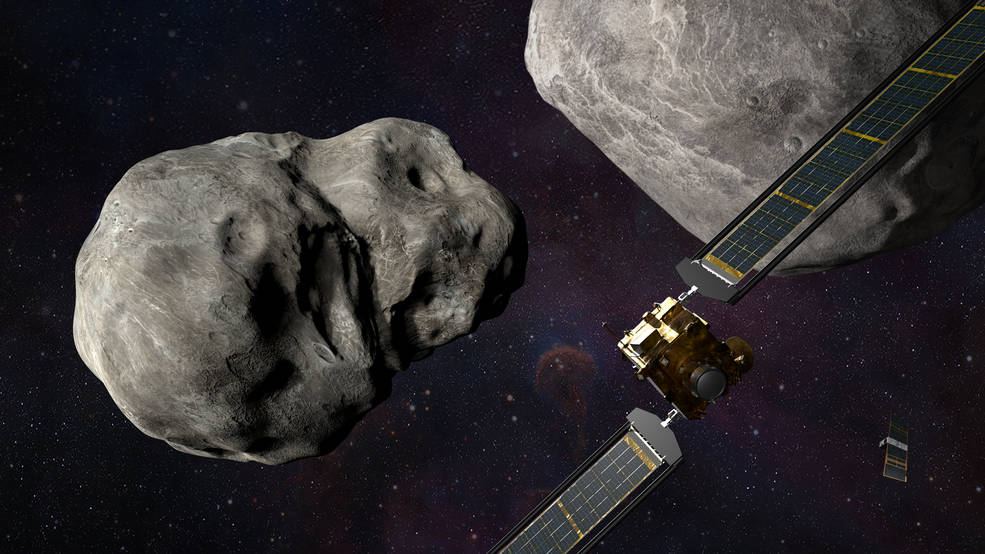
NASA reports the Launch Readiness Review (LRR) was completed today, Nov. 23, and all systems are GO for launch on Nov. 24.
“A team of launch managers for NASA’s Double Asteroid Redirection Test (DART) mission have authorized approval to proceed to launch countdown at Vandenberg Space Force Base in California,” NASA said in a Nov. 23 blog post.
You can watch live launch coverage on NASA Television.
NASA TV broadcast will begin at 12:30 a.m. EST Wednesday, Nov. 24, 2021 (9:30 p.m. PST Tuesday, Nov. 23, 2021), on NASA Television, the NASA app, and the agency’s website.
COMING UP: #DARTMission launch! 🚀
Our first test of #PlanetaryDefense is set to lift off at 1:21am ET (06:21 UTC) to attempt to change the motion of a non-threatening asteroid. Tune in at 12:30am ET (05:30 UTC) for live coverage: https://t.co/z1RgZwQkWS pic.twitter.com/qiOjrLLquM
— NASA (@NASA) November 24, 2021
About 10 months from now in Fall 2022 NASA’s DART will intentionally crash into the moonlet asteroid Dimorphos in an attempt to slightly change its orbit around Didymos, within the Didymos binary asteroid system on 2 Oct 2022.
It important to note that although Didymos and Dimorphos are near Earth asteroids they pose NO threat to Earth either before or after the intentional collision.
The collision will take place at a distance of about 6.8 million miles (11 million kilometers) from Earth.
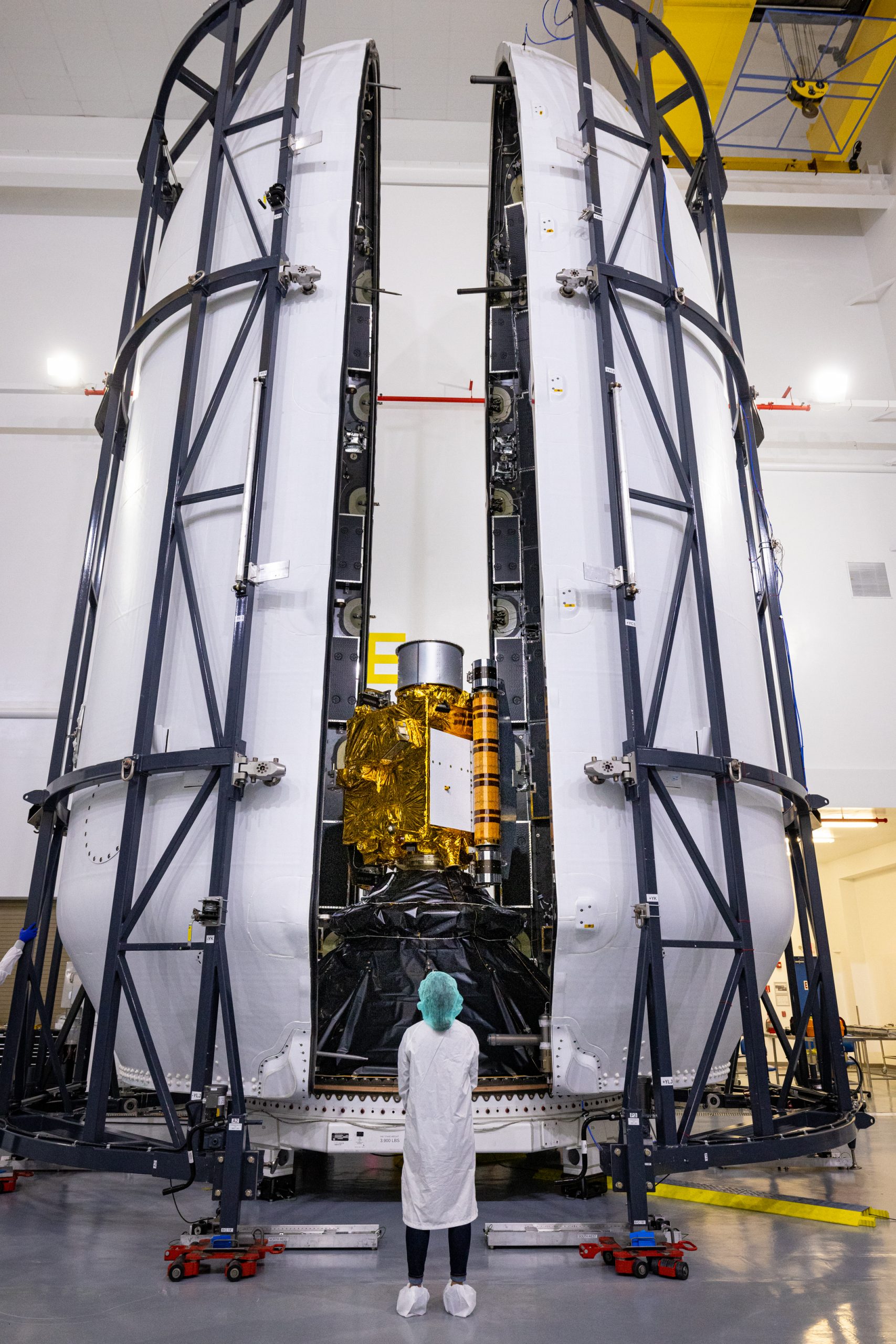
Ground-based telescopes will be trained onto Didymos and Dimorphos to try and measure the trajectory change – which will be slight.
DART is designed to direct itself to smash into impact Dimorphos while traveling at a speed of roughly 15,000 miles per hour or 4 mi/sec, (24,000 kilometers per hour).
“The Didymos system is the ideal candidate for DART because it poses no actual impact threat to Earth, and scientists can measure the change in Dimorphos’ orbit with ground-based telescopes,” says NASA.
In the weeks and months after DART crashes into Dimorphos scientists will use the ground based telescopes to make precise measurements of the resulting change in its orbit around Didymos
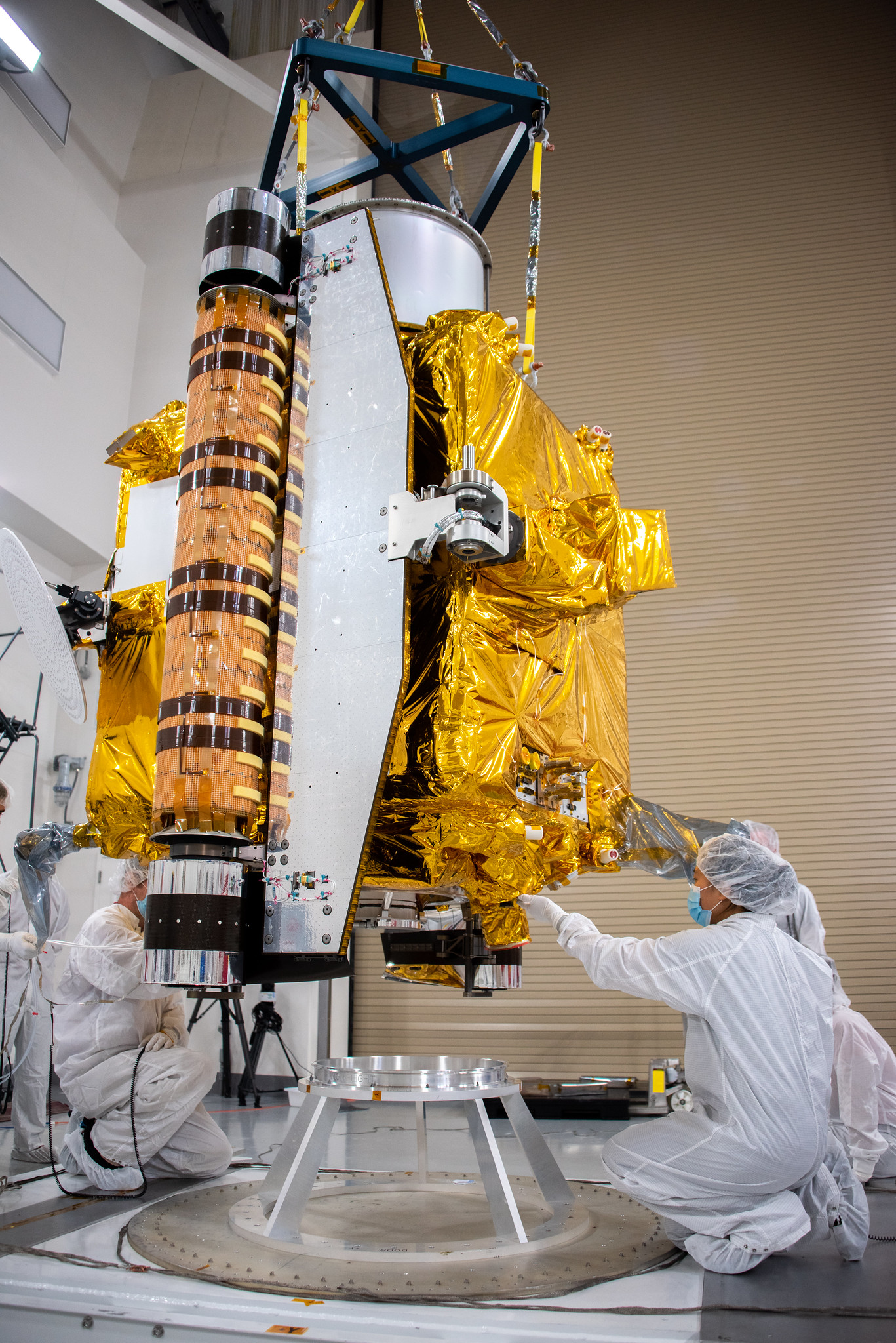
The DART mission is comprised of two components: the DART spacecraft provided by the Johns Hopkins Applied Physics Laboratory and LICIACube or Light Italian Cubesat for Imaging of Asteroids, a cubesat provided by the Italian Space Agency (ASI).
The 1345 pound (610 kg) DART is equipped with a single instrument, the Didymos Reconnaisance and Asteroid Camera for Optical navigation (DRACO) – used both for navigation and to determine the properties of the kinetic impact site and to take higher resolution images of the binary asteroids on final approach.
The 31 pound LICIACube cubesat will separate and deploy from DART about 10 days before the kinetic impact and image the collision of DART with Dimorphos using two cameras – wide and narrow angle to capture the impact and ejecta plume.
LICIACube will pass by at a distance of 55 km and also turn around to look back after sailing by.
The power is provided by a pair of ROSAs – rollout solar arrays.
The 229 ft tall (70 m) SpaceX Falcon 9 is twice flown ‘flight-proven’ booster B1063 – now launching for the 3rd time.
The first launch a year ago blasted off from Vandenberg SFB with NASA’s Sentinal-6 Michael Freilich satellite
SpaceX has deployed the OCISLY droneship to again recover the booster for recycling to a future launch.
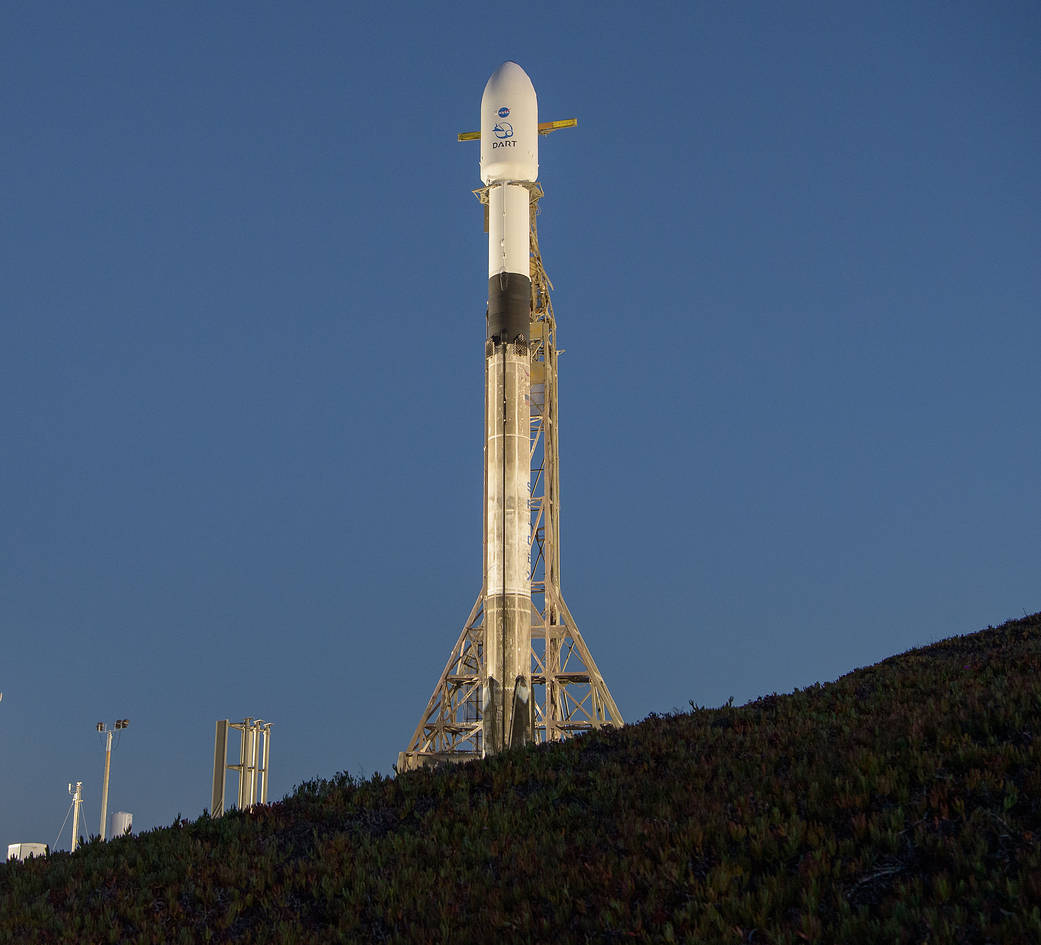
All systems and weather are looking good for tonight’s Falcon 9 launch of @NASA’s DART into an asteroid-intercepting interplanetary trajectory → https://t.co/bJFjLCzWdK pic.twitter.com/BBrMndhpkQ
— SpaceX (@SpaceX) November 23, 2021
Ken’s commentary about the DART mission was featured on WESH 2 NBC News Orlando on Nov. 24:
https://www.wesh.com/article/dart-mission-nasa-asteroid/38336037
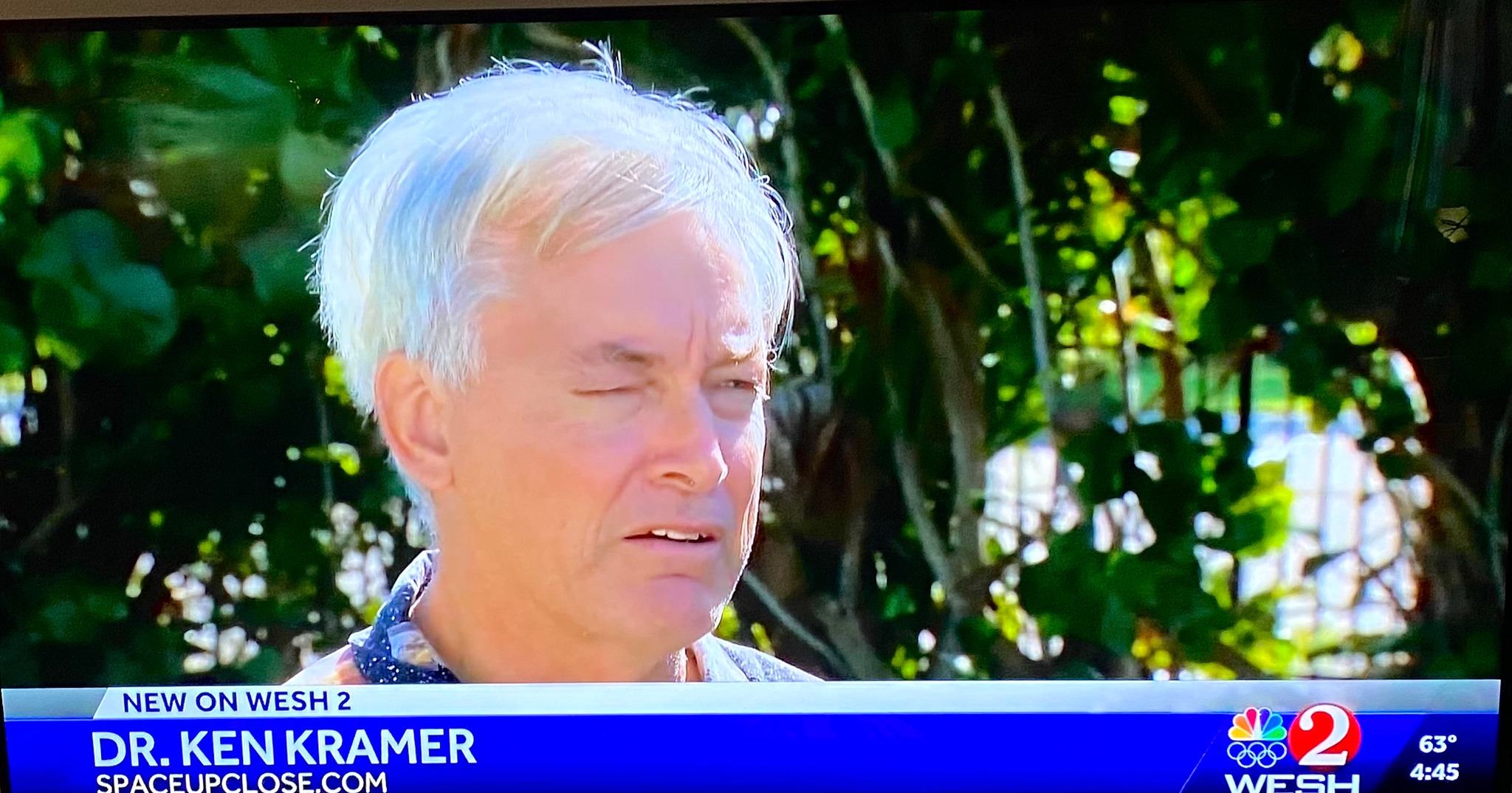
Watch Ken’s continuing reports about DART, SpaceX Crew and Cargo Dragons, Artemis, SLS, Orion and NASA missions, Lucy Asteroid mission, Blue Origin and Space Tourism, SpaceX Starlink, Commercial Crew and Starliner and Crew Dragon and onsite for live reporting of upcoming and recent SpaceX and ULA launches including Crew 1 & 2 & 3, ISS, Solar Orbiter, Mars 2020 Perseverance and Curiosity rovers, NRO spysats and national security missions and more at the Kennedy Space Center and Cape Canaveral Space Force Station.
Stay tuned here for Ken’s continuing Earth and Planetary science and human spaceflight news: www.kenkremer.com –www.spaceupclose.com – twitter @ken_kremer – email: ken at kenkremer.com
Dr. Kremer is a research scientist and journalist based in the KSC area, active in outreach and interviewed regularly on TV and radio about space topics.
………….
Ken’s photos are for sale and he is available for lectures and outreach events
Please consider supporting Ken’s work by purchasing his photos and/or donating at Patreon:
https://www.patreon.com/kenkremer
x



